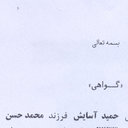Dietary predictors of childhood obesity in a representative sample of children in north east of Iran.
Từ khóa
trừu tượng
OBJECTIVE
The prevalence of obesity is increasing in Iranian youngsters. This study aimed to assess some dietary determinants of obesity in a representative sample of children in Neishabour, a city in northeastern, Iran.
METHODS
This case-control study was conducted among 114 school students, aged 6-12 years, with a body mass index (BMI) ≥95th (based on percentile of Iranian children) as the case group and 102 age- and gender-matched controls, who were selected from their non-obese classmates. Nutrient intake data were collected by trained nutritionists by using two 24-hour-dietary recalls through maternal interviews in the presence of their child. A food frequency questionnaire was used for detecting the snack consumption patterns. Statistical analysis was done using univariate and multivariate logistic regression (MLR) by SPSS version 16.
RESULTS
In univariate logistic regression, total energy, protein, carbohydrate, fat (including saturated, mono- and poly-unsaturated fat), and dietary fiber were the positive predictors of obesity in studied children. The estimated crude ORs for frequency of corn-based extruded snacks, carbonated beverages, potato chips, fast foods, and chocolate consumption were statistically significant. After MLR analysis, the association of obesity remained significant with energy intake (OR = 2.489, 95%CI: 1.667-3.716), frequency of corn-based extruded snacks (OR = 1.122, 95%CI: 1.007-1.250), and potato chips (OR = 1.143, 95%CI:1.024-1.276). The MLR analysis showed that dietary fiber (OR = 0.601, 95%CI: 0.368-0.983) and natural fruit juice intake (OR = 0.909, 95%CI: 0.835-0.988) were protective factors against obesity.
CONCLUSIONS
The findings serve to confirm the role of an unhealthy diet, notably calorie-dense snacks, in childhood obesity. Healthy dietary habits, such as the consumption of high-fiber foods, should be encouraged among children.


